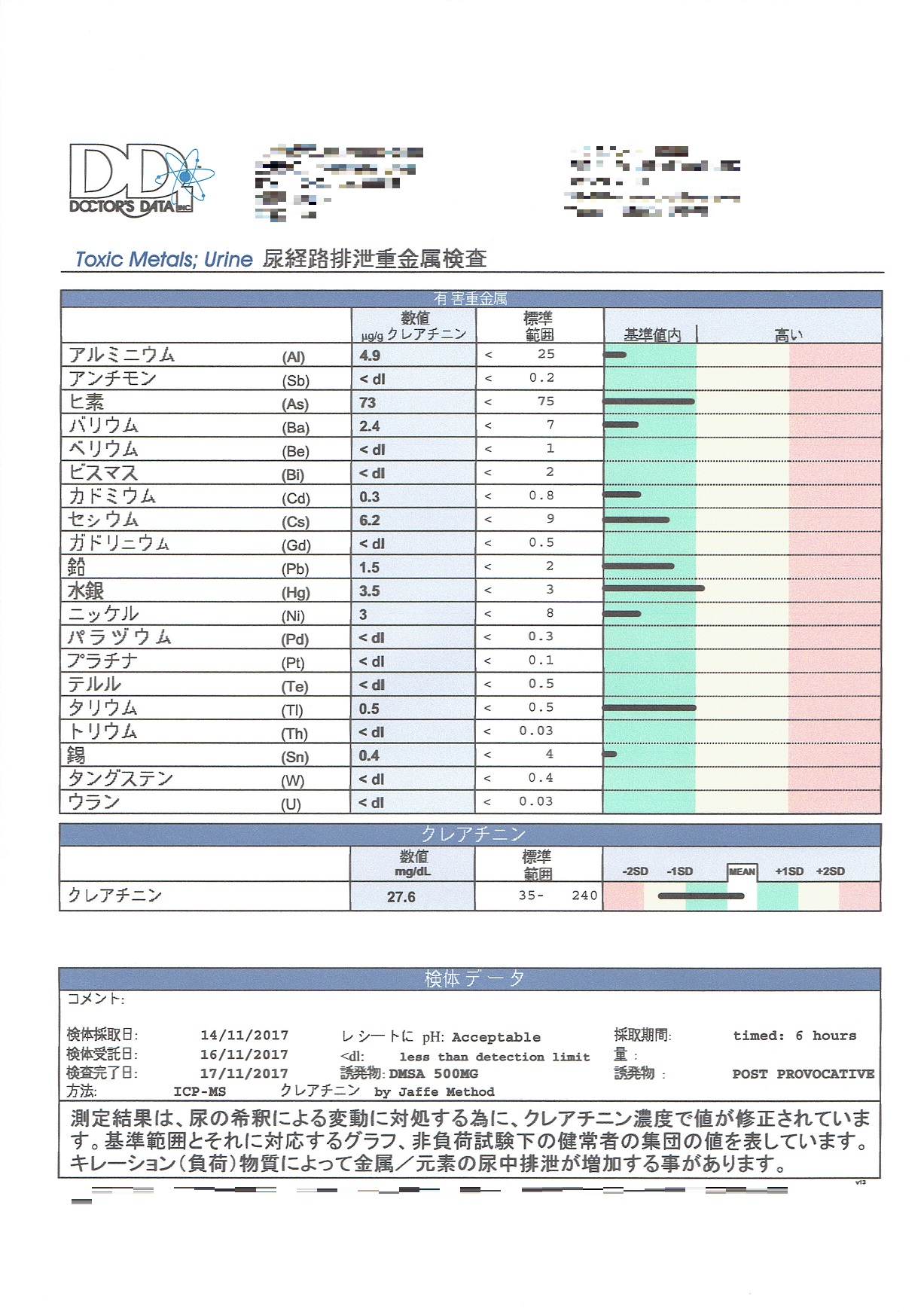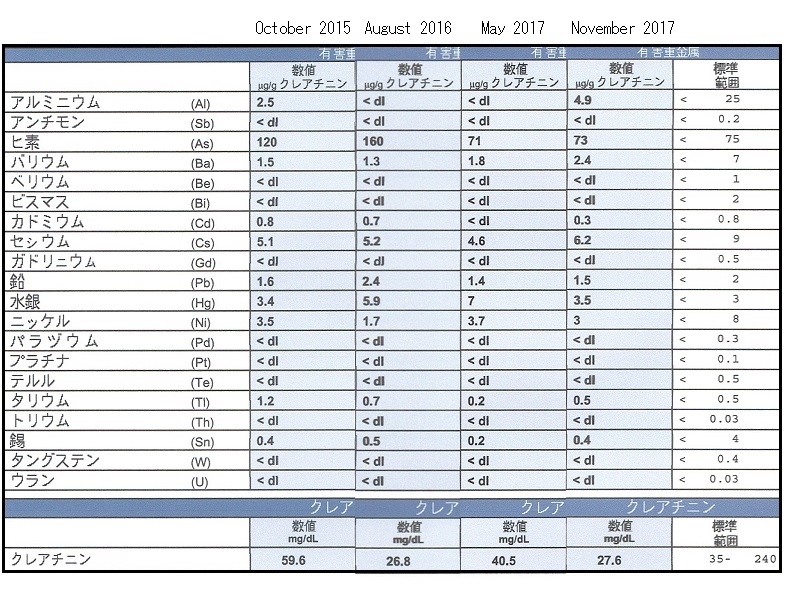
table of contents
Urinary excretion heavy metal test
Urinary excretion heavy metal test results in November 2017
Excerpt from record 21

Urinary excretion heavy metal test
Harmful heavy metal
Numerical value,Standard range,Within standard value,high
Aluminum
Antimony
Arsenic
Barium
Beryllium
Bismuth
Cadmium
Cesium
Gadolinium
Lead
Mercury
Nickel
Palladium
Platinum
Tellurium
Thallium
Thorium
Tin
Tungsten
Uranium
Creatinine
Creatinine
Sample data
The determination result is corrected by the creatinine concentration, taking into consideration the fluctuation due to urine dilution.
It shows the reference range and the corresponding graph, and the value of the population of healthy subjects under the unloaded test.
Chelation substances may increase urinary excretion of metals/elements.
Comparison of test results
The comparative data are data for October 2015, August 2016, May 2017, and November 2017.
From the left, data for October 2015, data for August 2016, data for May 2017, data for November 2017.
Urinary excretion Heavy metal test 20 items compared.
Numerical values and graphs are displayed separately.

Aluminum 2 5 → <dl → <dl → 4 9 Go up
Antimony <dl → <dl → <dl → <dl No detection
Arsenic 120 → 160 → 71 → 73 Go up
Barium 1 5 → 1 3 → 1 8 → 2 4 Go up
Beryllium <dl → <dl → <dl → <dl No detection
Bismuth <dl → <dl → <dl → <dl No detection
Cadmium 0 8 → 0 7 → <dl → 0 3 Go up
Cesium 5 1 → 5 2 → <dl → 6 2 Go up
Gadolinium <dl → <dl → <dl → <dl No detection
Lead 1 6 → 2 4 → 1 4 → 1 5 Go up
Mercury 3 4 → 5 9 → 7 → 3 5 Go down
Nickel 3 5 → 1 7 → 3 7 → 3 Go down
Palladium <dl → <dl → <dl → <dl No detection
Platinum <dl → <dl → <dl → <dl No detection
Tellurium <dl → <dl → <dl → <dl No detection
Thallium 1 2 → 0 7 → 0 2 → 0 5 Go up
Thorium <dl → <dl → <dl → <dl No detection
Tin 0 4 → 0 5 → 0 2 → 0 4 Go up
Tungsten <dl → <dl → <dl → <dl No detection
Uranium <dl → <dl → <dl → <dl No detection
The values of aluminum, arsenic, barium, cadmium, cesium, lead, thallium, and tin are within the standard range although the values are increasing.
Mercury is 3 5 μg/g, which exceeds the standard range, but it is close to the value that is likely to be within the standard range.
Other heavy metals are within the standard range.

Aluminum is within the standard value, so there is no problem.
Arsenic is within the standard value, so there is no problem.
Barium is within the standard value, so there is no problem.
Cadmium is within the standard value, so there is no problem.
Cesium is within the standard value, so there is no problem.
Lead is within the standard value, so there is no problem.
Thallium is within the standard value, so there is no problem.
Problem is within the standard value, so there is no problem.
The result of the fourth inspection revealed that heavy metals other than mercury are within the standard range due to chelation.
Regarding mercury, what had been accumulated was discharged, and the number seems to have decreased.
As a whole, the chelation treatment can be judged to be complete because it is within the reference range.